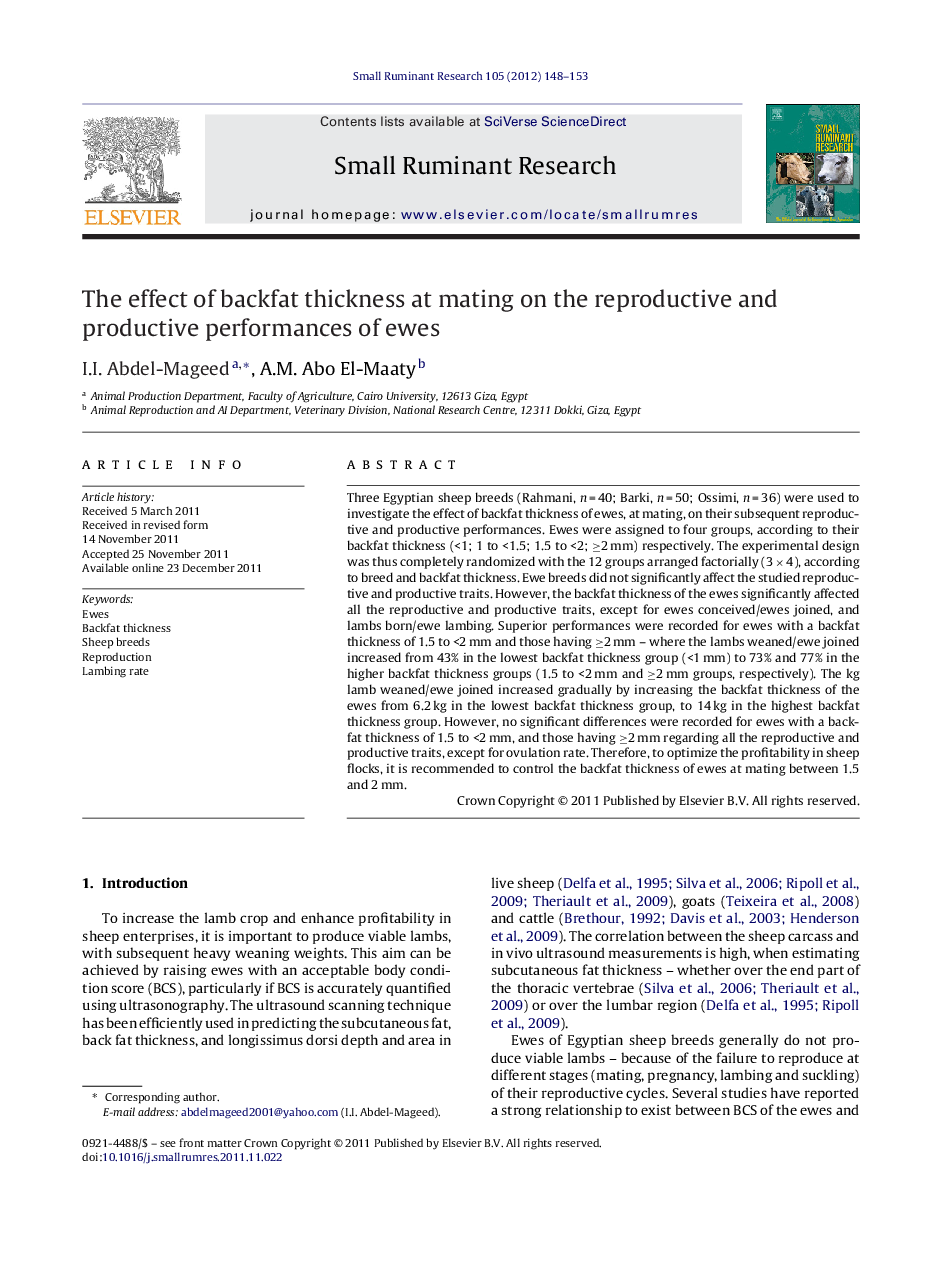| Article ID | Journal | Published Year | Pages | File Type |
|---|---|---|---|---|
| 5796131 | Small Ruminant Research | 2012 | 6 Pages |
Three Egyptian sheep breeds (Rahmani, n = 40; Barki, n = 50; Ossimi, n = 36) were used to investigate the effect of backfat thickness of ewes, at mating, on their subsequent reproductive and productive performances. Ewes were assigned to four groups, according to their backfat thickness (<1; 1 to <1.5; 1.5 to <2; â¥2 mm) respectively. The experimental design was thus completely randomized with the 12 groups arranged factorially (3 Ã 4), according to breed and backfat thickness. Ewe breeds did not significantly affect the studied reproductive and productive traits. However, the backfat thickness of the ewes significantly affected all the reproductive and productive traits, except for ewes conceived/ewes joined, and lambs born/ewe lambing. Superior performances were recorded for ewes with a backfat thickness of 1.5 to <2 mm and those having â¥2 mm - where the lambs weaned/ewe joined increased from 43% in the lowest backfat thickness group (<1 mm) to 73% and 77% in the higher backfat thickness groups (1.5 to <2 mm and â¥2 mm groups, respectively). The kg lamb weaned/ewe joined increased gradually by increasing the backfat thickness of the ewes from 6.2 kg in the lowest backfat thickness group, to 14 kg in the highest backfat thickness group. However, no significant differences were recorded for ewes with a backfat thickness of 1.5 to <2 mm, and those having â¥2 mm regarding all the reproductive and productive traits, except for ovulation rate. Therefore, to optimize the profitability in sheep flocks, it is recommended to control the backfat thickness of ewes at mating between 1.5 and 2 mm.
